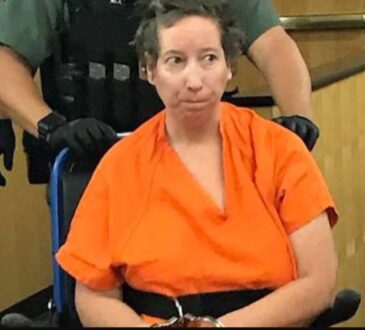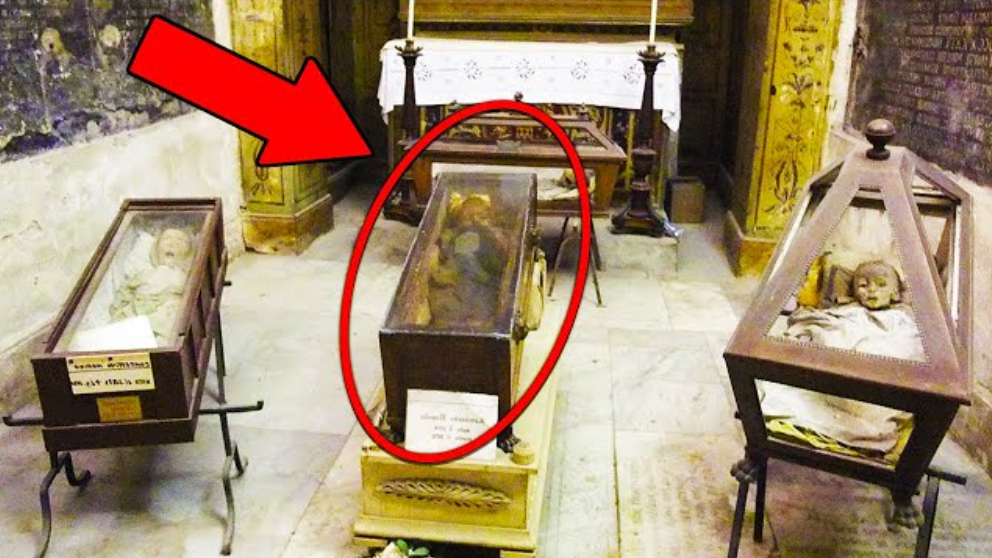Here’s What is at the Bottom of the Deepest Hole on Earth That Would Leave You in a Shock

In the year 1970, Soviet scientists began one of the greatest and most ambitious drilling and mining experiments in human history in the Kola Peninsula. A drilling project started, which would go on to reach farther down into the Earth’s crust than any other in history, setting a Guinness World Record that still stands today. Even now, over 20 years since the cessation of all drilling activities at the borehole, which has since been welded shut, it’s remembered as a grand science project that brought about great scientific discoveries, as well as rumors, myths, and legends of the type that wouldn’t be out of place in a modern horror movie.

In its prime, the superstructure that was built around the rig on the Kola Peninsula was 20 stories high, and over the time of its operation, it would host over 3,000 workers operating in shifts. Teams who were permitted to operate in or around the rig comprised leading geologists with specialist knowledge, not only of how to operate a large drill but also what might be found below the surface. All of the workers lived up in the tundra, six miles away from the nearest village, and when daylight gave way to darkness, the drilling project began.
The immediate success of the project was almost unusual; there were no initial problems, and the drills continued to bore into the earth, ultimately reaching a distance of over seven miles. It was the most significant scientific achievement since the Americans had successfully placed a man on the moon.
There were some who said that drilling the hole would open up a portal to Hell, allowing demons to escape into the world. These rumors grew louder when work on the project was temporarily halted in 1983. The legends say that even though the temperature on the ground shouldn’t have exceeded 392 degrees Fahrenheit, the temperature recorded at the end of the drill actually reached over 1,500 degrees.
Allegedly, on the end of the drill was a microphone which captured the screams of tormented souls deep in the pits of Hades. These screams were relayed to observers on the surface who became traumatized by what they were hearing, and an atmosphere of deep fear and anxiety gripped the rig, and work suddenly had to be shut down without warning. At least that’s the story. Here is a recording that’s claimed to come from the Kola borehole from a microphone that was lowered into the well. Listen to it for yourself.
Not many people initially believed the rumors, and the drill was set back into operation. However, in 1992, digging work at the Kola borehole stopped forever. At its deepest point, the temperature at the bottom of the hole was 350 degrees Fahrenheit. Scientists had been expecting a maximum temperature of 200 degrees. Nobody, including project head David Gue Berman, could explain why there was such a significantly higher temperature than anticipated. Those in charge concluded that it would be unsafe to continue operations, and so they stopped.
Gue Berman keeps the myths and legends about the borehole alive to this day. He takes tourists to the site of the abandoned drill, telling them the tale of how foolish scientists drilled a hole to the underworld and released ghosts and demons from below. It’s an entertaining tour and helps Gue Berman pay his bills, but it isn’t actually what happened.
The story about the borehole opening a portal to Hell had actually been started as an April Fool’s joke by Finnish journalists. They intended it to be a funny story, but something got lost in translation, and it was reprinted by American newspapers as fact before anybody had the chance to do any fact-checking. The story had gone around the world, and everybody knew the Kola Super-Deep Borehole as a haunted mine.
What happened at Kola and what was achieved by scientists there is actually more interesting than any myth or legend could ever be. This was a completely new science involving drilling to depths nobody had tried to reach before, unimaginable pressure, and new technology to bore the holes, battling high temperatures and resistant rock. The geologists pressed on, determined to reach their goal of going further into the Earth’s crust than anyone had ever achieved previously.
By 1979, they’d broken that world record, taking it from the Bertha Rogers hole in the USA. By 1983, the drill had passed the 7.45-mile mark, and it was time to celebrate. Moscow announced the success of the project, and scientists and dignitaries from all over the world were invited to come and see the results for themselves.
The great and the good descended on the Kola Peninsula to see the rig and to study samples of rock that had been extracted from the incredible depths. No human eyes had ever seen rock created under these types of geological forces before, and people wanted to see them and spend time studying them. Because of this, work at the site stopped for a full year to allow these studies to take place.
That turned out to be a bad idea. When drilling restarted again in 1984, disaster was around the corner. A three-mile-long drill string, which is a hollow tube essential for keeping the drill lubricated and working, twisted off and became embedded in the hole. Five years’ worth of work had been lost in an instant.
The only option was to begin drilling again from farther up the borehole. Operators resumed the work and began to drill a parallel hole starting at a depth of 4.3 miles. It took them years, but in 1989, they finally once again passed the seven-mile mark. Once more, at its maximum depth, the borehole measures 7.62 miles.
Now, having reached these depths once more, further study was possible, and this time Kola turned into a sort of time machine. By digging so far into the ground below us, the drill and the hole could tell us much information about what conditions were like on the Earth billions of years ago, what our home was like when it was young, and how our planet came to be formed in the first place.
As the data that Kola provided was examined in greater detail, it became apparent that what we thought we knew about geology was wrong. The working models of the time were correct up to a depth of 4.3 miles, but then differences began to appear. Gue Berman would go on to explain that the expected transition from granite to basalt didn’t occur as he expected at this depth. He expected to find that a discontinuity in seismic waves would cause the transition, but instead found that it happens the other way around. The seismic waves are caused by metamorphic transitions within the granite rock itself.
Additionally, the rock was full of water, which was unexpected because there was no route for surface water to penetrate so deeply. Instead, the water came from deep crust minerals and had laid there for billions of years, trapped below a layer of impenetrable rock. The age of the rocks and the depths of the borehole could be confirmed as around 2 billion 800 million years. Fossils of plankton have been found 3.7 miles below the surface, embedded within these rocks, allowing scientists to state with greater certainty exactly when life on Earth began to appear.
Enormous quantities of hydrogen appeared from within the hole, and nobody knew why. Those who saw mud escaping from the top of the borehole described it as boiling with hydrogen. Below the 5.6-mile level there are diamonds beyond imagination, perfectly preserved within the Earth’s crust as if it had been growing them, in waiting for us to find them. There may even be thick seams of gold down there too.
Geologists were keen to examine the lunar rock, and some of those geologists were the same people who had been working at Kola. They noticed with astonishment that the composition of the moon rocks was exactly the same as the composition of the rocks found at the 1.86-mile level below the Earth’s surface.
This lends credence to a popular theory of how the moon came to be created. Scientists had long believed that at some point billions of years ago, and comparatively early in its development, the Earth was struck by an asteroid or a similar celestial body.
The impact was so severe that part of our home planet was broken away and became the moon. Both Earth and its new moon slowly regained their spherical appearance over the course of the eons that followed. Is it possible that the part of Earth that broke away actually came from the region of the Kola Peninsula? That would explain why the rock formations are so similar.
So why was the decision taken to close the Kola Super-Deep Borehole down? We know about the temperature issue, but could they have tried digging another hole or trying a different kind of drill perhaps? But there didn’t seem to be much point. All of the original scientific aims had been reached and achieved.
Part of the reason Kola happened at all is that both scientists and the government wanted to test the capabilities of this kind of drilling equipment in extreme conditions. The tests had been passed, so drilling capabilities had been significantly increased.
There were no more rocks to collect either; everything that geologists were likely to find had been collected, cataloged, and safely stored away. Kola had been investigated thoroughly and told us much about how our planet was made and the events it experienced during its long existence. With all of that work done, there was no fresh financing for work to be done at Kola, and so all the staff finally went back home.
Today, the building which once housed the drill stands as a curiosity out in the middle of nowhere. It’s impressive in scale and still talked about in near-mythical terms, but it does nothing.
You’ll still see David Gue Berman there sometimes, leading his tour groups to the place he used to work. Perhaps it’s best to leave the last sentiment to Gue Berman, who has always felt that work on the hole ended too early and that there were still secrets to be discovered. In his own words, he said, “We have the deepest hole in the world, so we should use it.”




